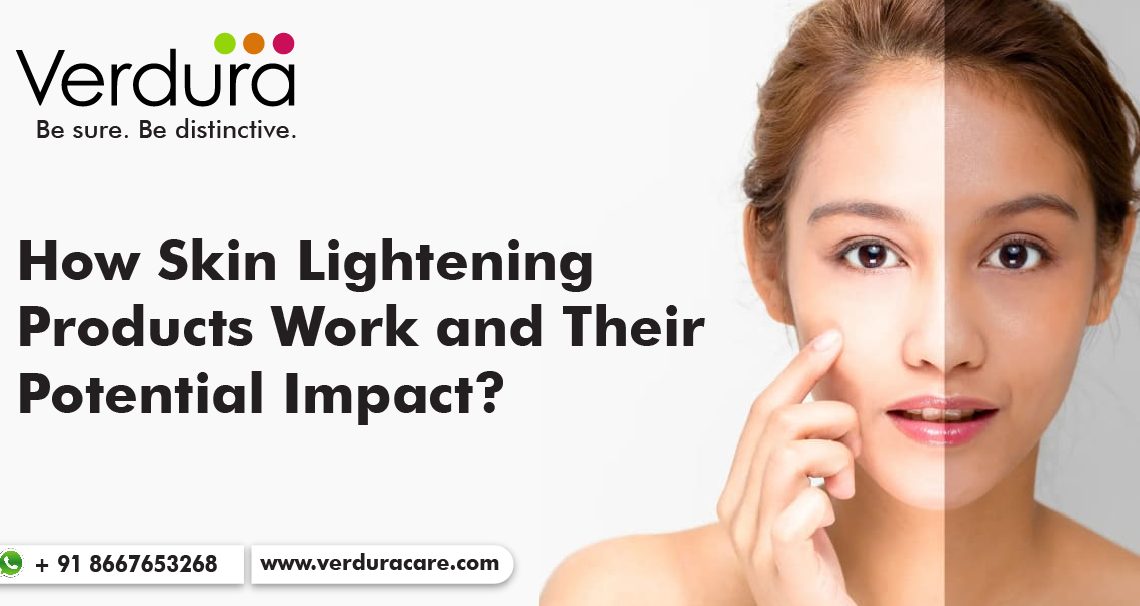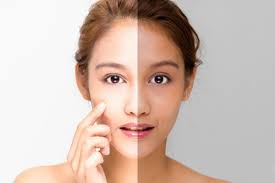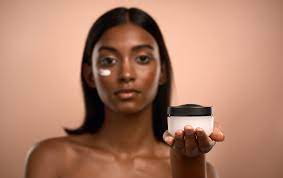How Skin Lightening Products Work and Their Potential Impact?

In our quest for flawless skin, the beauty industry offers a myriad of options, including skin lightening products. These products claim to reduce hyperpigmentation, dark spots, and uneven skin tone, ultimately aiming to achieve a lighter complexion. But have you ever wondered how these products actually work? In this blog post, we will explore the science behind skin lightening products, shedding light on their mechanisms and potential implications. Join us as we dive into this intriguing subject and uncover the truth behind the quest for lighter skin.

Understanding Hyperpigmentation:
Before delving into skin lightening products, let’s first understand hyperpigmentation. Hyperpigmentation occurs when there is an overproduction of melanin, the pigment responsible for the color of our skin, hair, and eyes. Various factors, such as sun exposure, hormonal changes, inflammation, and skin injuries, can trigger excessive melanin production, leading to dark spots or patches on the skin.
- The Science Behind Skin Lightening Products:Skin lightening products work by targeting melanin production and distribution. There are several mechanisms through which these products can influence pigmentation:
2.1. Inhibiting Enzymes:
Certain skin lightening products contain ingredients that inhibit the activity of enzymes involved in melanin production, such as tyrosinase. These enzymes play a vital role in the synthesis of melanin. By inhibiting their activity, these products can help reduce melanin production and subsequently lighten the skin.
2.2. Disrupting Melanin Transfer:
Melanin is synthesized in specialized cells called melanocytes and then transferred to nearby skin cells called keratinocytes. Some skin lightening products work by disrupting this transfer process, preventing melanin from reaching the upper layers of the skin. This disruption can lead to a lighter complexion over time.

2.3. Exfoliation and Cell Turnover:
Certain skin lightening products incorporate exfoliating agents that help remove the top layer of dead skin cells. By promoting cell turnover, these products encourage the shedding of hyperpigmented cells and the emergence of new, lighter skin cells.
- Potential Implications and Considerations:
While skin lightening products may offer temporary results, it’s important to consider their potential implications and exercise caution:
3.1. Safety Concerns:
Some skin lightening products may contain ingredients, such as hydroquinone or mercury, which can have adverse effects on the skin and overall health. It is crucial to choose products that are dermatologist-approved, free from harmful ingredients, and comply with safety regulations.
3.2. Psychological and Societal Impact:

The pursuit of lighter skin can have profound psychological and societal implications. It is important to embrace diversity and challenge societal beauty standards that prioritize lighter skin tones. Celebrating and appreciating all skin colors fosters a more inclusive and accepting society.
3.3. Focus on Overall Skin Health:
Instead of solely focusing on achieving a lighter complexion, prioritize overall skin health. Maintain a skincare routine that includes sun protection, gentle cleansing, moisturization, and the use of products that address specific skin concerns like hyperpigmentation. A holistic approach ensures a healthy and radiant complexion.

3.4 Choose the right products for your skin
Skin care products play a significant role in helping you maintain a spotless glow. Always choose right skin care product that are non comedogenic and helps you to keep your skin happy. Verdura range offers Verdura skin brite cream and Verdura anti acne pack to keep your skin free from acne, hyperpigmentation, dark spots and post pimple marks.
Skin lightening products have gained popularity as individuals seek to address hyperpigmentation and achieve a lighter complexion. Understanding the science behind these products helps us make informed choices and consider the potential implications. Embracing diversity and focusing on overall skin health are key to promoting a positive and inclusive beauty culture. Remember, true beauty lies in self-acceptance and embracing the uniqueness of our skin, regardless of its shade.